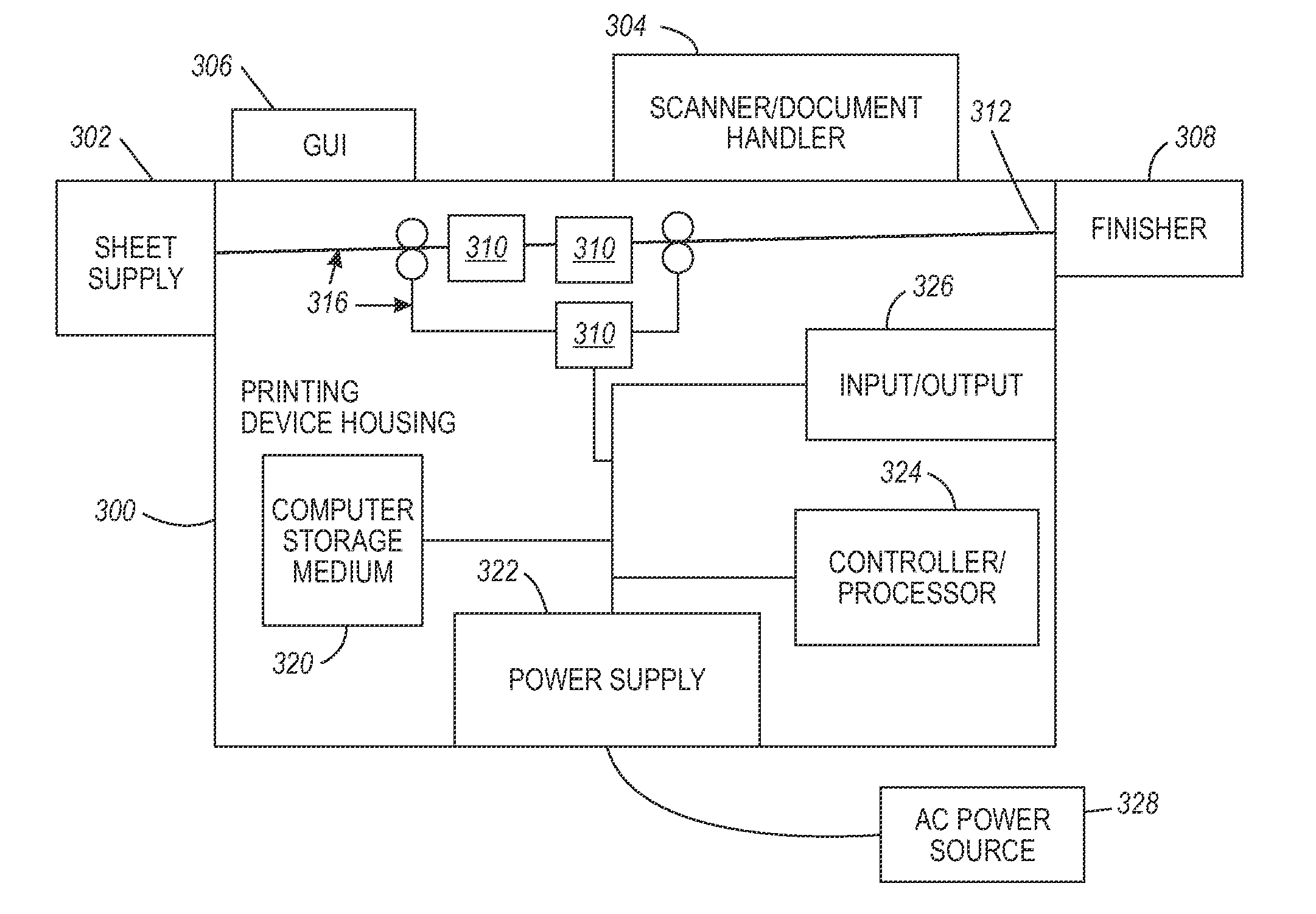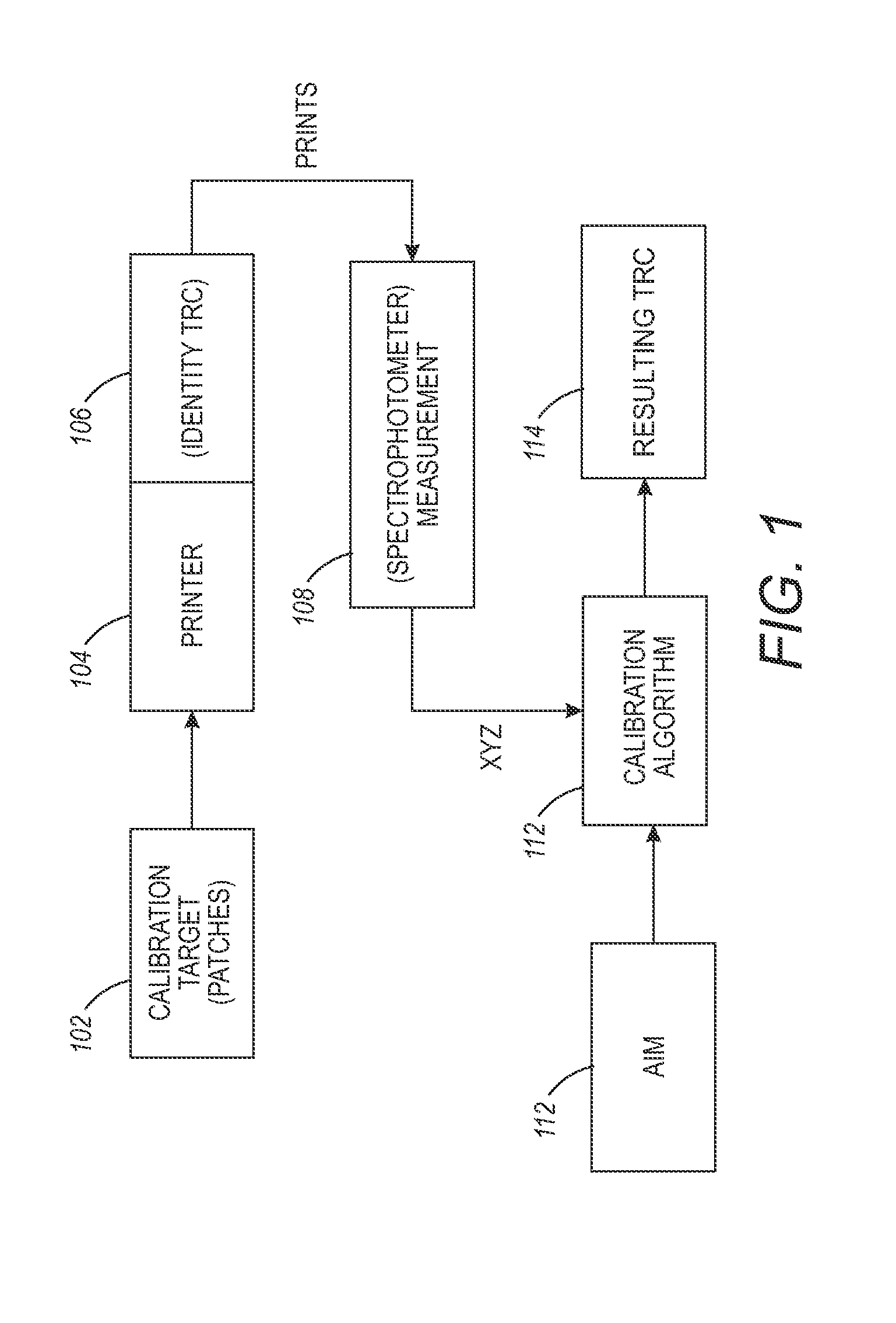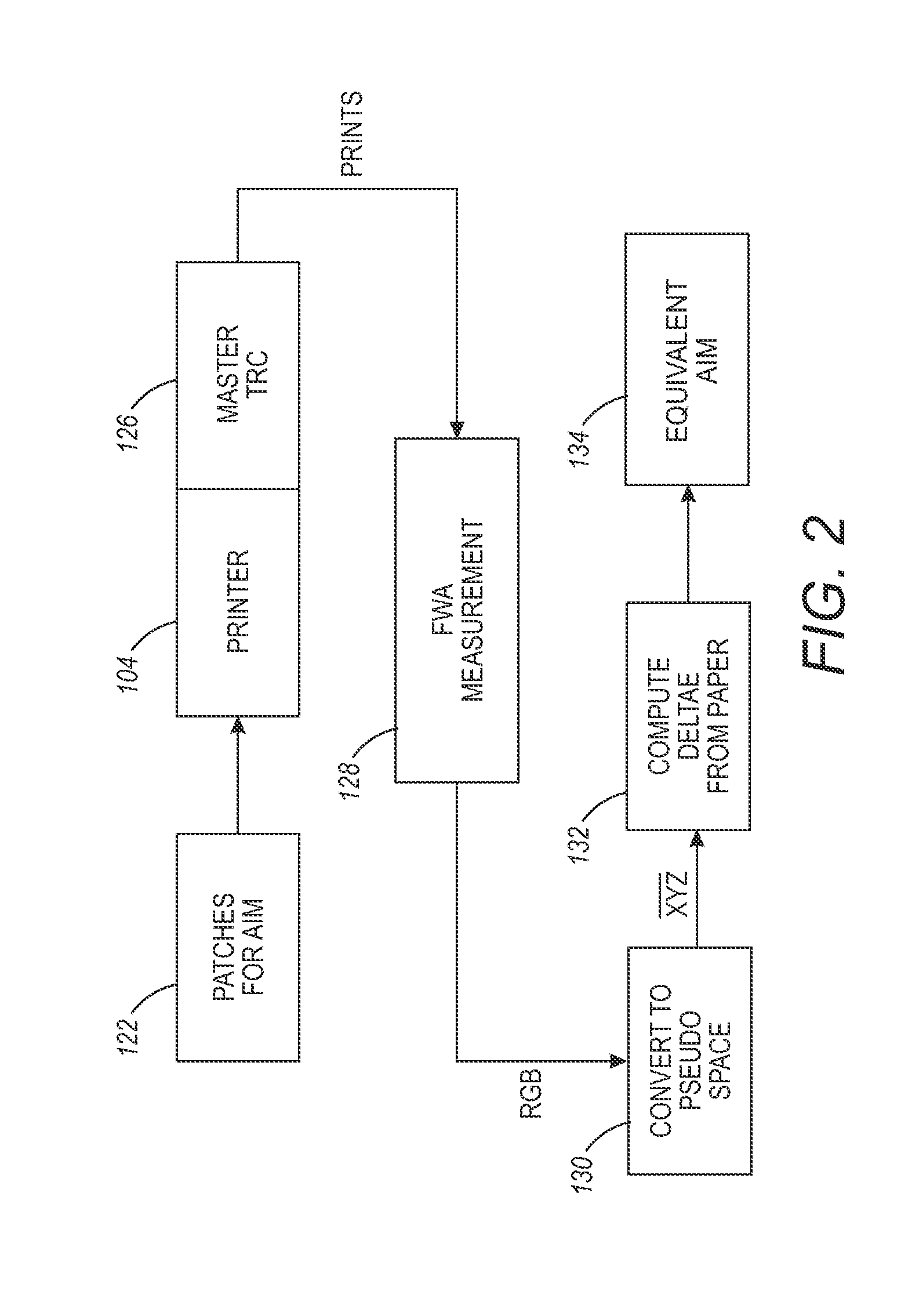Printer calibration using a scanner
a technology of scanner and printer, applied in the field of printing device calibration, can solve problems such as inability to reproduce exactly
- Summary
- Abstract
- Description
- Claims
- Application Information
AI Technical Summary
Benefits of technology
Problems solved by technology
Method used
Image
Examples
Embodiment Construction
[0015]Traditionally calibration for high-end printers is achieved via a spectrophotometer. Today, many mid-range printers are equipped with built-in scanners (flat-bed or inline “scanbar”, measuring in RGB space). These color sensitive input devices can be utilized for data acquisition during the calibration procedure. In general, RGB sensitive scanners provide broadband color information more related to the integrated, broadband, tristimulus values than the spectral reflectance that emits from true spectrophotometers.
[0016]Therefore, without further processing of the measured RGB data, scanner type color accuracy is not adequate for high image quality tasks such as printer calibration. Further, building a scanner profile is time consuming or even unfeasible, especially when the accuracy requirement is critical. Therefore, the methods herein use scanner color information, acquired by RGB sensitive arrays. The methods herein are enabled by the development of a “pseudo tristimulus val...
PUM
 Login to View More
Login to View More Abstract
Description
Claims
Application Information
 Login to View More
Login to View More - R&D
- Intellectual Property
- Life Sciences
- Materials
- Tech Scout
- Unparalleled Data Quality
- Higher Quality Content
- 60% Fewer Hallucinations
Browse by: Latest US Patents, China's latest patents, Technical Efficacy Thesaurus, Application Domain, Technology Topic, Popular Technical Reports.
© 2025 PatSnap. All rights reserved.Legal|Privacy policy|Modern Slavery Act Transparency Statement|Sitemap|About US| Contact US: help@patsnap.com



